It’s easy to see why many people love older properties with their desirable features like high ceilings, period features and generous proportions. Every home we’ve owned has been over 100 years old, and we absolutely love the charm and character that older homes have.
There is one huge drawback to living in older houses, though – they are not energy efficient and tend to be cold, draughty and expensive to heat.
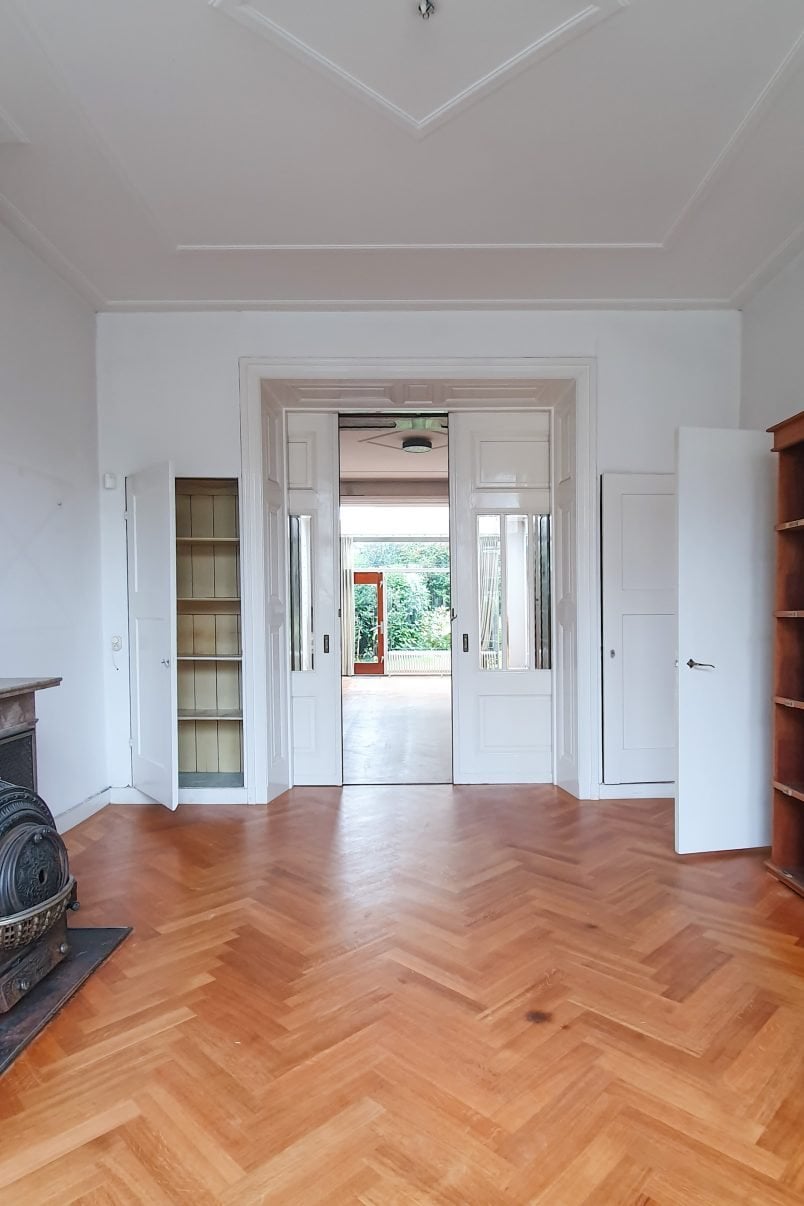
Having moved into our new house at the end of September last year, we know first hand just how difficult it can be to heat an older property without breaking the bank. Our energy bills for the last couple of months have been horrendous and are easily the highest energy bills we’ve ever received.
With energy costs at an all-time high and the environment in need of as much help as it can get, we all need to do our best to not waste energy and save money in the process.
So, how do you make an old house energy efficient and save money in the process?
Obviously, ripping out and replacing old windows, installing a new energy-efficient heating system and insulating every square centimetre of your home is the best way to go, but the cost can be extremely prohibitive, and many of these things definitely aren’t a quick fix.
Luckily, there are a lot of smaller energy-saving updates you can do yourself right now, too.
Start with a home energy audit
When you’re looking at ways to make an old house energy efficient, it’s best to start by finding the areas of your home that can be improved. There are companies that will carry out a detailed energy survey of your home, but you can easily carry out a basic audit yourself, too.
Don’t worry; a home energy audit is much easier than it sounds, and it’s important to find out where you’re wasting energy to be able to work out solutions to combat any problems you have.
To make checking the energy efficiency of your home as easy as possible, we’ve created a helpful FREE home energy audit checklist for you. Just download it, print it and tick the boxes to make sure you check all areas of your home.
Areas where you could be wasting energy, include your loft, draughts around windows and skirting boards, uninsulated pipes and an old heating system.
When you’ve completed your audit, you’ll probably find that there are many areas of your home that could be improved.
To give you a better overview of the energy efficient home improvements you can make, we’ve divided the energy-saving updates into 3 categories:
- Super Quick Fixes
These are energy-saving updates that are quick, easy, and affordable to do yourself (mostly).
- Medium Term Updates
These energy saving improvements will require a bit more work and planning.
- Long Term Updates
These are the big updates that you’ll probably need to pay a professional company to carry out for you.
Fixes
- Check Your Radiators
- Loft Insulation
- Draught Proofing
- Change Lightbulbs to LEDs
- Insulate Pipes
- Service Heating System
- Turn your heating down
- Cavity Wall Insulation
- Insulate Under Floors
- Install Smart Technologie (Radiator Valves, Thermostats & Smart Meters)
- Curtains, Carpets & Rugs
- Install Cavity Wall or Internal Insulation
- Replace Windows or Upgrade Glas
- Replace Heating System (are alternative energy sources possible)
- Install Solar Panels
- Update Appliances To More Energy Efficient Ones
This post contains affiliate links. We only recommend products we love and think that you will, too! Read our full disclaimer here.
Super Quick Fixes That You Can Do To Save Energy Right Now
Check Your Radiators
One of the quickest and completely free things to check is your radiators.
If the top feels cold, it’s likely that air is trapped in it, which will reduce its efficiency as the air will stop the warm water circulating around it. Trapped air in them will reduce their efficiency, and it will take longer to heat up your room.
To solve the problem, all you need to do is bleed the radiator. Turn off your radiator and let it cool down. Then, use a bleed key to turn the bleed valve until the air starts to escape. As soon as the water starts to come out, close the valve and make sure it’s completely tightened.
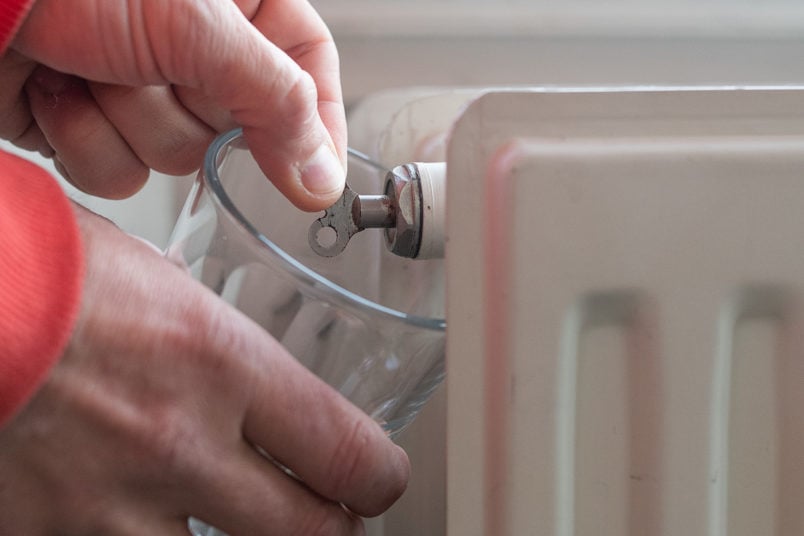
Something else you can do to improve the efficiency of your radiators is to make sure they aren’t blocked. Anything that’s in front of the radiators will block the warm air, and you’ll use more energy as it’ll take longer for your room to heat up.
Move furniture away from radiators, and make sure to opt for radiator covers that aren’t too solid so that they don’t block the heat.
Another easy way to reduce the amount of energy you use is to place foil behind your radiators on external walls to reflect the heat back into the room. It’s admittedly not the prettiest or most energy-saving solution ever, but it will reduce the amount of heat escaping through the walls.
Loft Insulation
You may be surprised at how quick and easy it is to install loft insulation and even more surprised at how quickly the investment in loft insulation pays for itself. According to the Energy Saving Trust, a whopping 25% of heating energy is lost through uninsulated roofs, so if it’s not already done, insulating your loft should jump right to the top of your priority list.
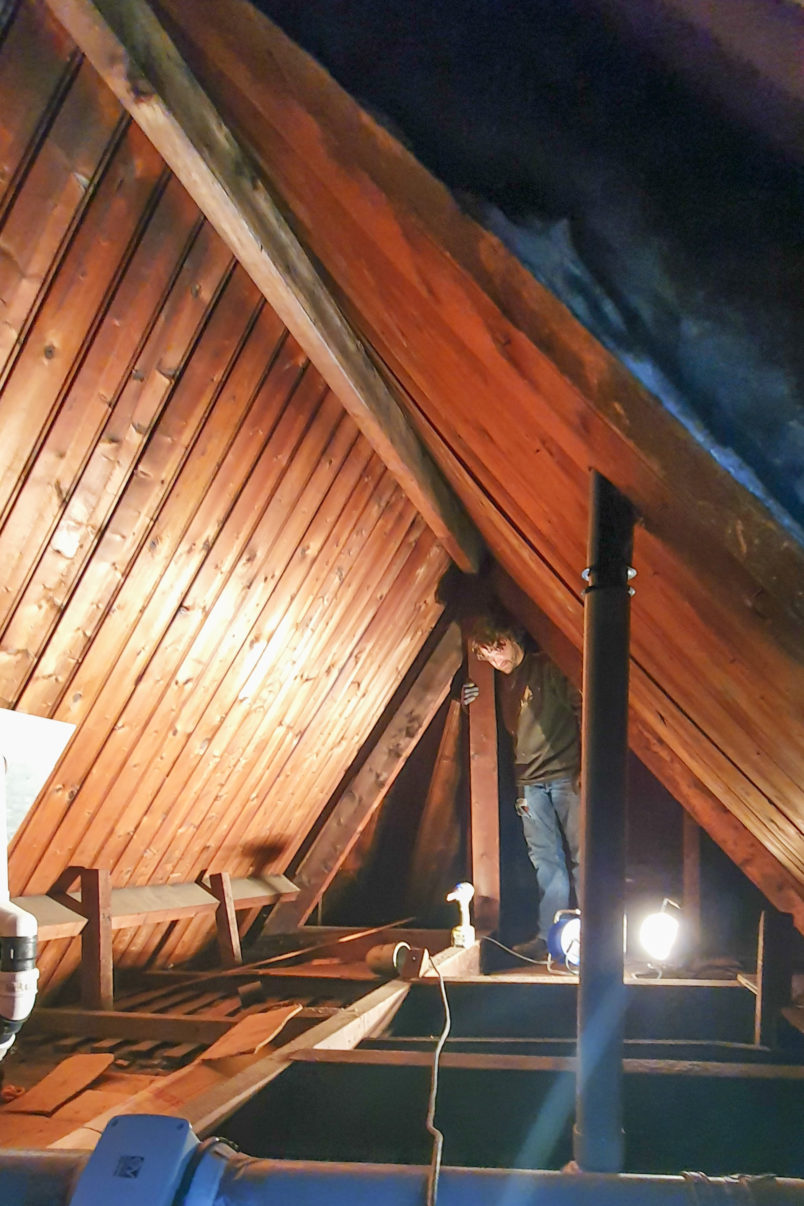
Loft insulation is affordable and will pay for itself quickly. Under certain circumstances and depending on where you live, you may even be able to get loft insulation for free through your energy provider.
Just bear in mind that the loft space will now be much colder after you’ve insulated it, as no heat from inside your house will be escaping through the ceiling, so don’t forget to insulate any pipes up there, too.
Insulate Pipes
Another extremely easy and quick update is insulating any pipes in cold areas area of your old home. You can buy pipe insulation at any DIY store, and it only takes seconds to push the sleeves over your pipes. They are available in different sizes depending on the size of your pipes and can easily be cut with a Stanley knife.
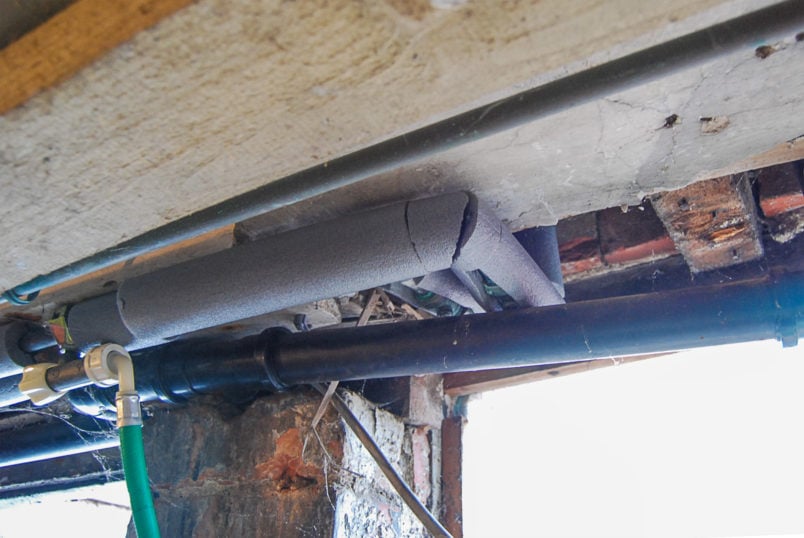
Turn Your Heating Down
Did you know that turning your heating down by just 1°C could save up to 6% on your heating bills? There’s a lot of potential to save on your heating bills, and just small adjustments can already result in big changes.
Even better results can be achieved by lowering your heating even further. Reducing the temperature from 20°C down to 16°C can reduce your bills by 24%. Obviously, you still need to be comfortable in your home, but it’s something you may want to consider in rooms you don’t use much. Don’t forget that you shouldn’t lower the room temperature below 15°C, though, as your walls will cool down and mould could develop.
Draught Proofing
Another simple energy-saving update you can easily do yourself is to reduce as many draughts in your home as much as possible.
We filled the gap between our skirting boards and floors in our Edwardian house, and it made a huge difference to the feel of the room. It was really easy and quick to do, and you can see exactly how to fill the gap between your floor and skirting board here.
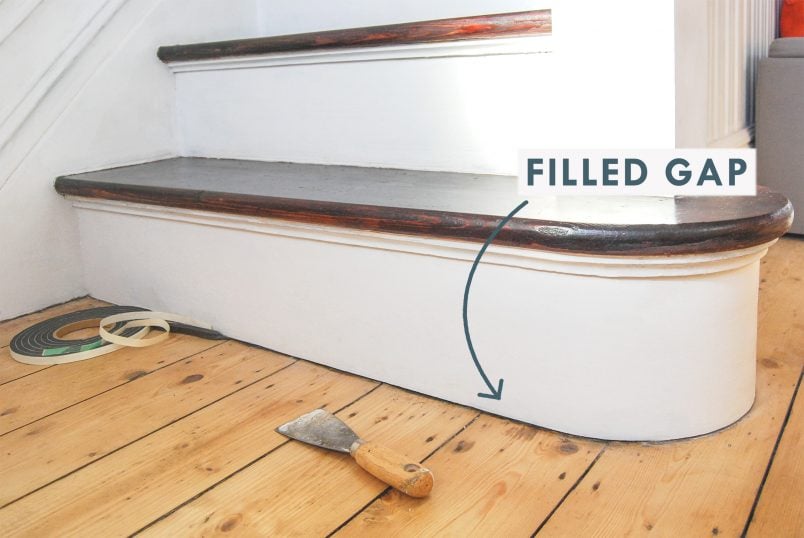
Another very common area where you’ll probably find more than a few draughty areas are your windows and doors. All of our windows are still single glazing and will need to be replaced in the long run, but in the meantime, we’ll be doing our best to reduce any energy loss through gaps and holes.
Make sure that your windows and doors close properly and identify any draughty areas. In winter, this is easy as you can usually just run your hand along the edges and feel where draughts come through. Alternatively, you can use a lighter or candle to see when the flame flickers (obviously, be careful!), or you could use an incense stick to be able to see the draughts.
To draught-proof any gaps where the window or door frame meets the wall, use some expanding foam filler and make sure your weather sealing strip is intact. If not, replace it, too.
If there are draughts around the casement (the bit of the window that opens), add a draught-proofing seal around the edge of the window. These seals are available in different thicknesses and colours; all you have to do is stick them around the edge of the window.
Change Your Lightbulbs
Switching your incandescent and halogen lightbulbs to LEDs is a super quick and easy thing to do and will instantly start saving you money, as lighting makes up around 15% of the average household electricity consumption. LEDs will last longer than traditional lightbulbs and will also reduce your carbon dioxide emissions by up to 40kg a year.
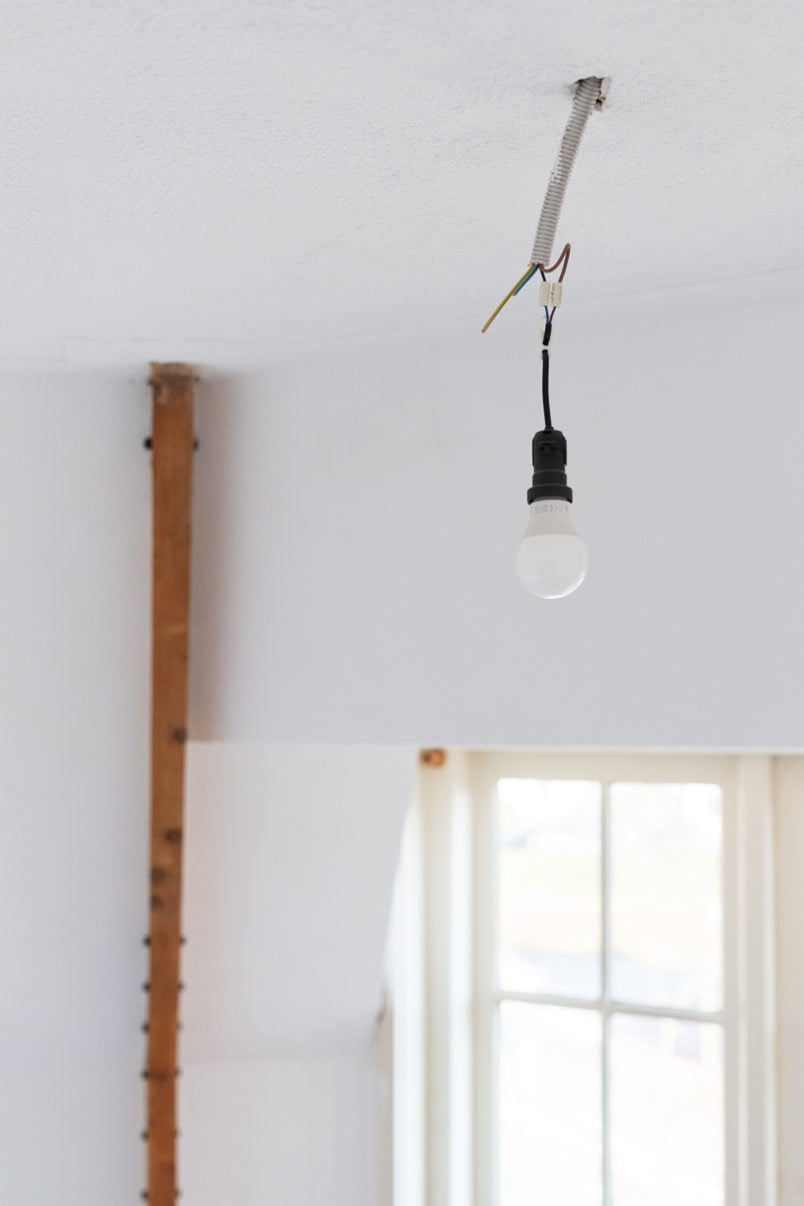
Service Your Heating System
You should have your heating system serviced regularly to ensure it runs as well as possible and to find any issues early on so that they don’t turn into expensive problems. Not only can a regular service of your boiler extend its life, but the right settings can also send you energy, too.
Medium Term Updates That Require A Bit More Planning
Cavity Wall Insulation
A lot of heat is lost through the walls of a building, and cavity wall insulation can be a good idea, but it’s not right for every property. You need a minimum cavity thickness for it to work, your wall has to be in a good condition and not let any moisture into the void and it has to be installed correctly to avoid any cold bridges.
Improving insulation in an old house is the best way to make a house more energy efficient, but it’s not a straightforward option, and it’s vital to get independent advice to check if your property is suitable. Cavity wall insulation can also cause a lot of problems if it’s not installed correctly, which is why it’s an upgrade we’ve always avoided until now.
Having said that, technology is always changing and improving, so hopefully, it’s something that will be viable for more homes in the future.
Insulate Under Floors
If you have a crawl space or a cellar under your home, you can use it to be able to access your floor from beneath and add insulation there, too. We installed insulation under the timber floors in our Edwardian house, and it made a massive difference to the temperature in the room.
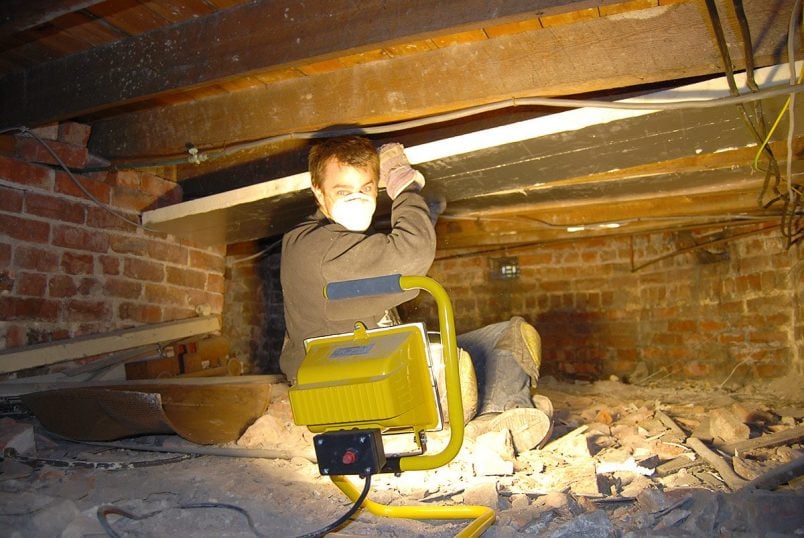
Crawling around under the floor of your home isn’t the most pleasant job ever, but installing insulation under your floor is very easy. It’s a job that you can easily do yourself in a weekend.
You lose about 10% of heat through your floor, so it’s an upgrade that’s high on our list of priorities, especially as we just found a hidden trap door to be able to access the space under our home.
Install Smart Technologie (Radiator Valves, Thermostats & Smart Meters)
Learning where and when you use your energy will allow you to make adjustments to your heating habits, and instead of heating your whole home all of the time, you can make changes to just heat for the times you use the different spaces in your home.
Learning when and where you use energy in your home isn’t difficult, but you can make it even easier by installing things like smart metres to check which appliances are using the most electricity and smart thermostats that learn your daily heating times and allow you to monitor the amount you’re using to help you keep track of your energy bills.
Switching your radiator valves to smart valves is another upgrade you can easily do yourself to save energy. These allow you to control the temperature in each room individually, and you can control them all via an app on your phone, too.
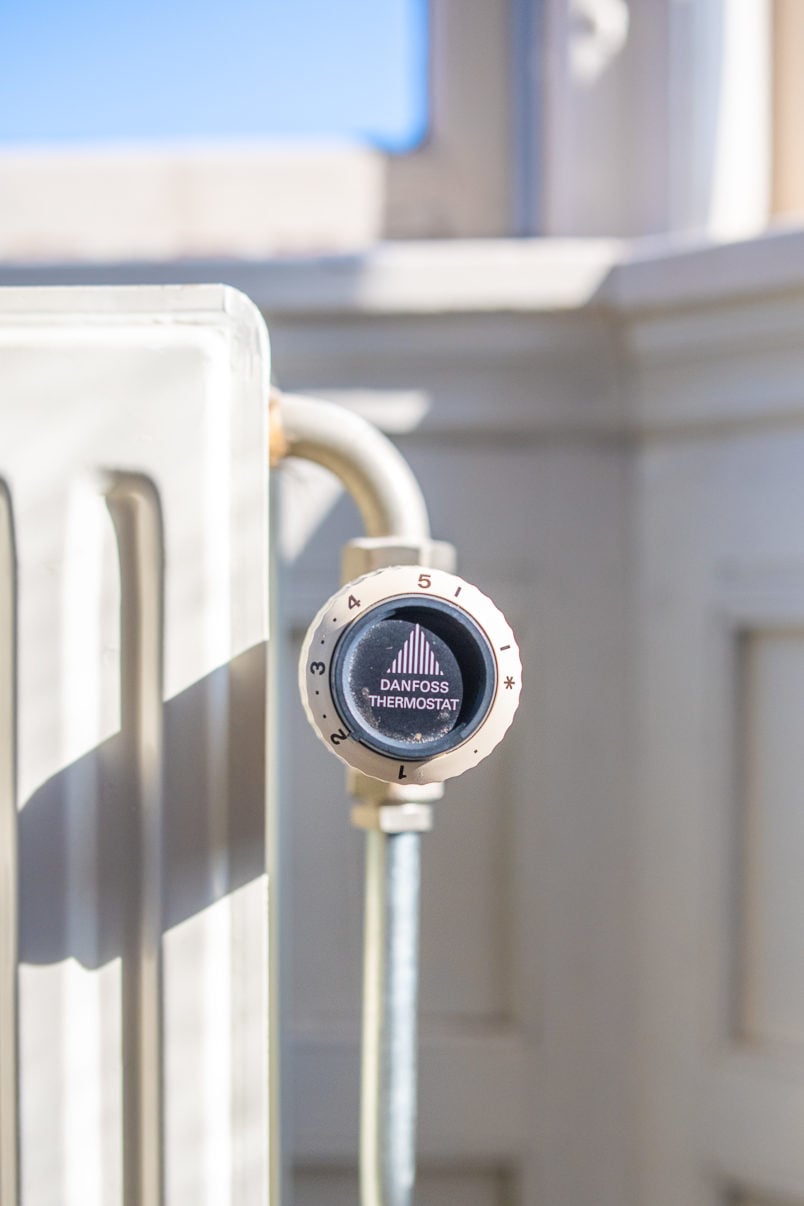
Curtains, Carpets & Rugs
Adding thick rugs, soft carpets and heavy curtains to your home is probably the prettiest way to help reduce heat loss in your home. Curtains will help minimise draughts around windows, and thick carpets will help insulate your floors.
As much as these are fairly quick updates, they can be expensive, but if you’re thinking about purchasing some soft furnishings for your home, it’s definitely worth looking at things like thicker underlay or some thermal lining for your curtains.
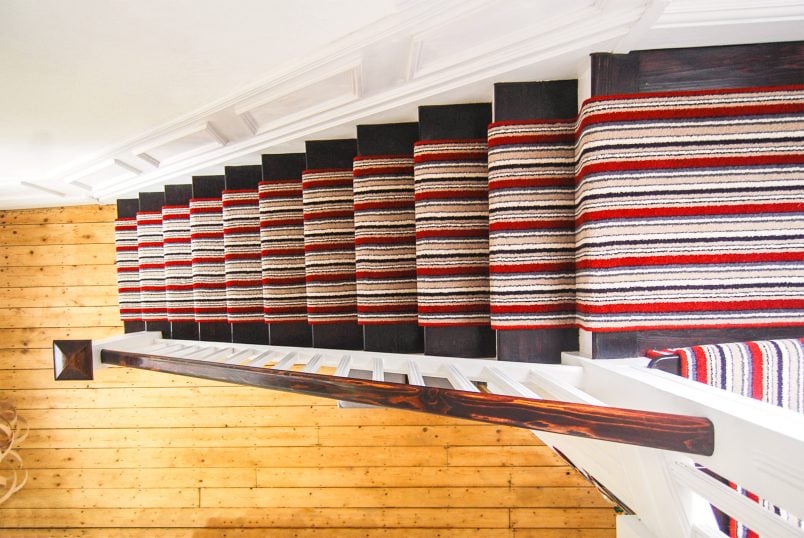
Long Term Updates That Require More Planning & Investment
Insulating Your Walls On The Inside
If it’s not possible to insulate your home from the outside or have cavity wall insulation installed, your last option is to insulate your exterior walls from the inside.
It’s definitely not the easiest, cheapest or most straightforward method to insulate your home, but insulating your external walls is one of the most energy-saving things you can do to your home.
There are a couple of drawbacks when it comes to insulating your walls from the inside, though. A thick layer of internal wall insulation will obviously make your room a bit smaller, but more importantly, it could cause damp issues if it’s not installed correctly, and it’s a good idea to get professional advice before you insulate your walls from the inside.
Replace Your Windows
There’s no getting around the fact that replacing your windows is a huge investment. If your windows are in good condition, it’s not going to be worth upgrading them purely to save energy, but if, like ours, they need a bit of TLC or are single-pane windows, then investing in double-glazing or triple glazing is a good investment to make.
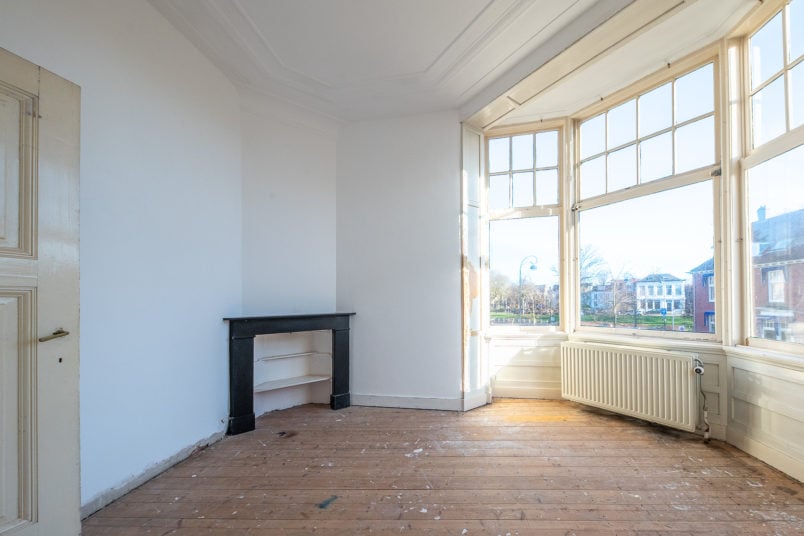
If you have single glazing, an alternative to switching out your entire window can be to replace just the glass with double glazing, which is often something that’s sometimes even possible in conservation areas or listed buildings as it doesn’t change the appearance of the window (obviously, this varies depending on where you live and you will still need approval).
We have enormous windows, and replacing them all would completely blow our entire renovation budget, so that’s exactly what we’re looking into at the moment. It’s still not a cheap option, but our timber window frames are in good condition, and there’s no point ripping them out if they can be used again!
Install Solar Panels
Solar panels can be a great way to generate your own electricity, but their effectiveness will depend on where you live, the aspect of your home and the style and size of your roof.
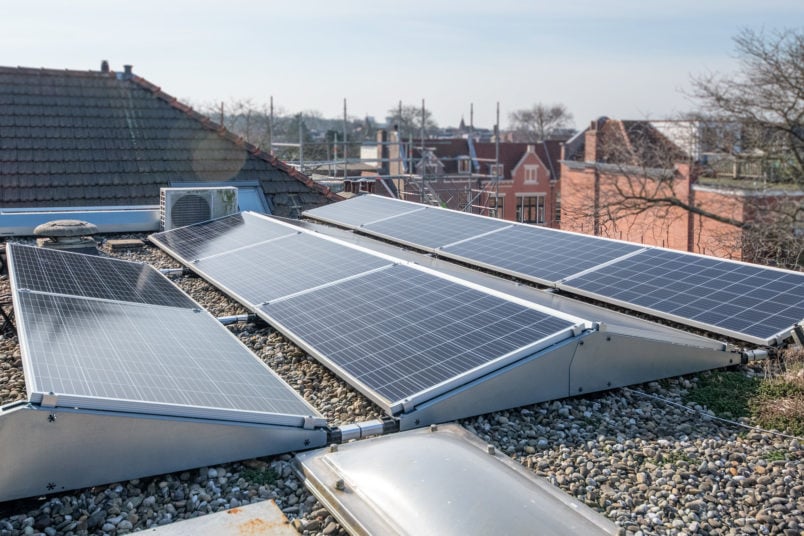
Solar panels are a pricey investment, but with a payback time of around 5 – 6 years, they can be a good investment even if you aren’t planning on staying in your home long-term.
Update Your Heating System
There are lots of different heating systems available, and what is best will entirely depend on the condition of your home. Heat pumps tend to work best in newer homes with underfloor heating, but there are other heating systems like biomass boilers or wood pellet boilers that could be a viable and environmentally friendly alternative to a standard gas boiler for your home, too.
Updating your heating system is obviously not a cheap thing to do, but if your boiler is older than 10 years, it’s likely that it isn’t as efficient as it once was and upgrading it could reduce your gas bills by 20-35%.
Depending on where in the world you live, there are often grants available for home improvements that reduce your energy consumption. In the UK, there are government schemes where you could get your old boiler replaced for free, so it’s definitely worth doing some more research before you decide on what’s best for you.
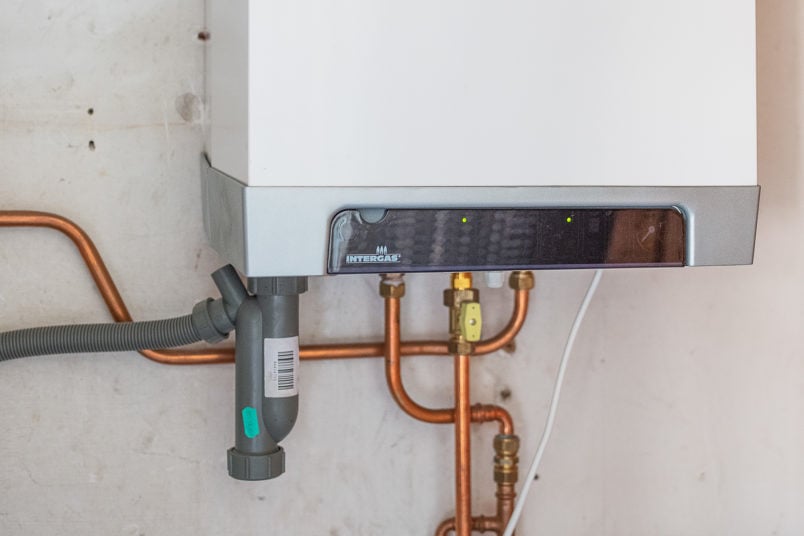
So, what are we doing to make our old house energy efficient & to reduce our energy consumption?
As I already mentioned, we had the worst energy bill we’ve ever seen, and to make matters worse, we’re cold almost all of the time as we tend to be very minimal when it comes to heating our older home.
We have to do as much as we can to reduce our bills but, given that I now have chilblains, it’s safe to say that I’m not keen on being quite so cold again next winter. Most of our efforts will be focused on how to make an old house warmer without making our bills rise even further.
Many of the methods we’ve shared above are easy ways to make your home more energy efficient. You can do a lot of them yourself, and that’s exactly where we’ll initially be focussing our efforts.
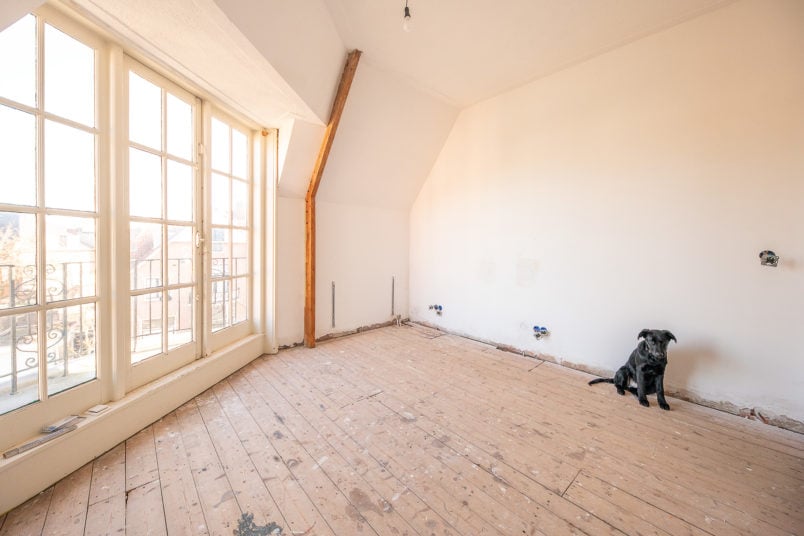
We’ve already checked our radiators and installed energy-saving lightbulbs everywhere. Next up on our list of jobs for the year is installing insulation in our loft, draught-proof everywhere, insulating under our floor, installing smart thermostats and radiator valves, replacing our heating system (we’re hoping to install a heat pump in our older home) and installing solar panels.
It’s definitely going to be a busy year for us, but we’re excited about improving our home and making it more energy efficient.
Have you made energy-saving improvements to your home? Do you have a heat pump or solar panels – we’d love to hear about your experiences! Leave us a comment below, and let us know what you think!

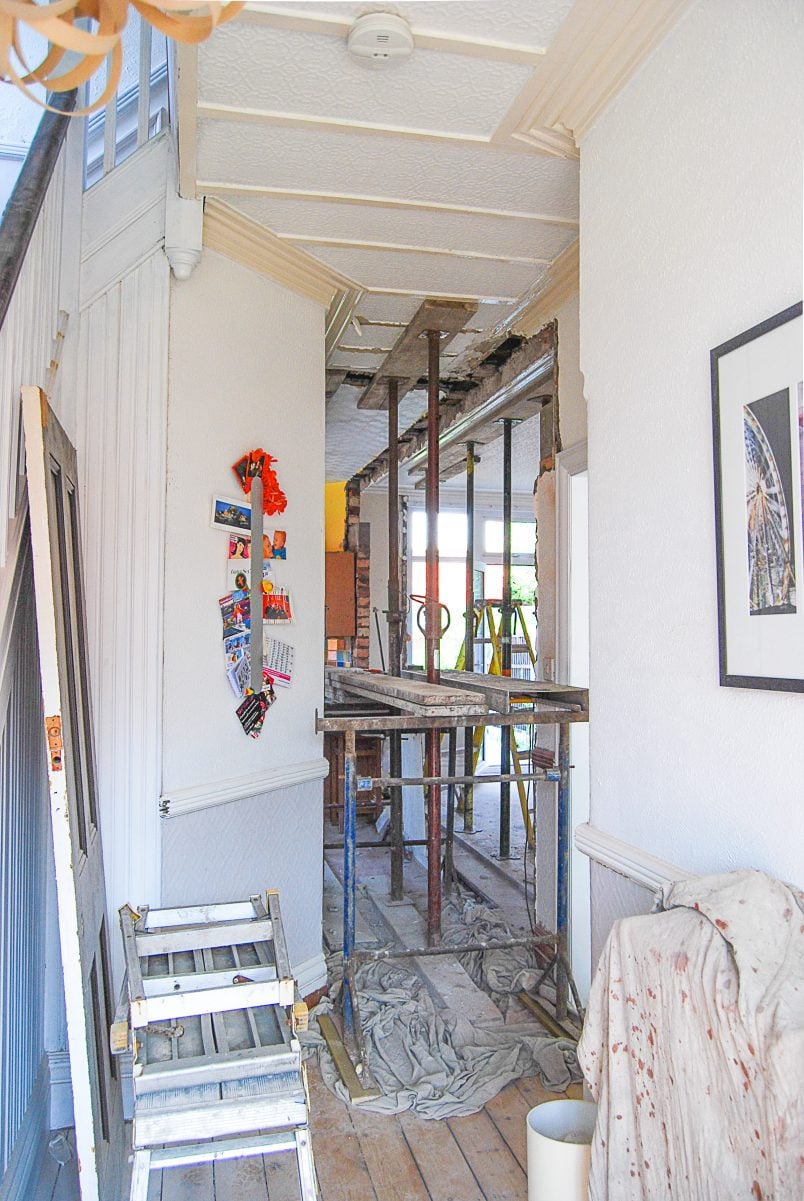
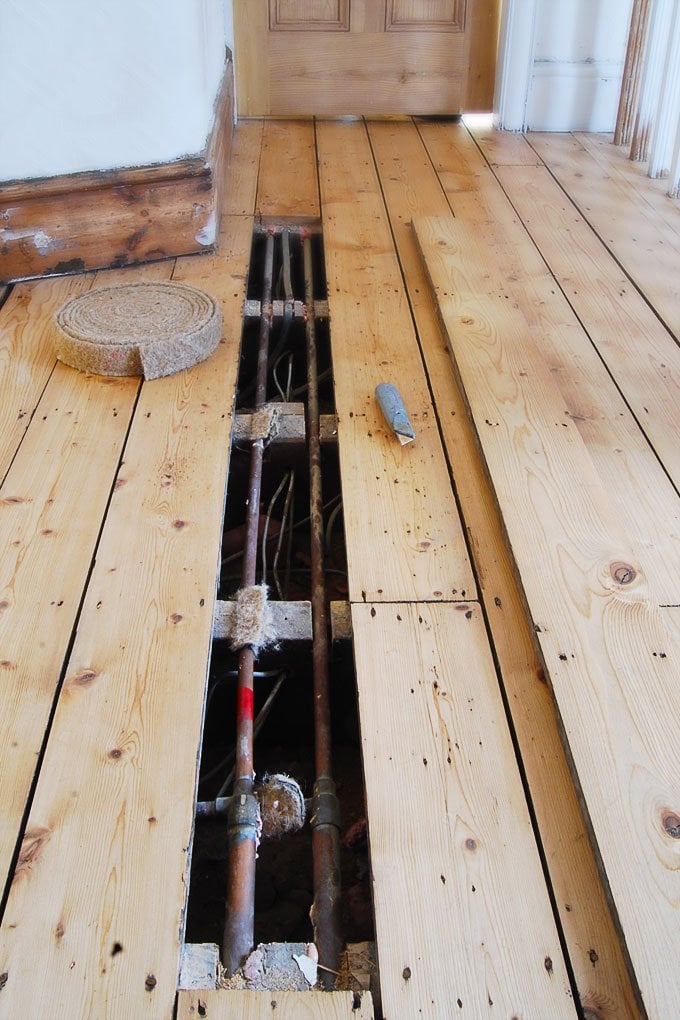
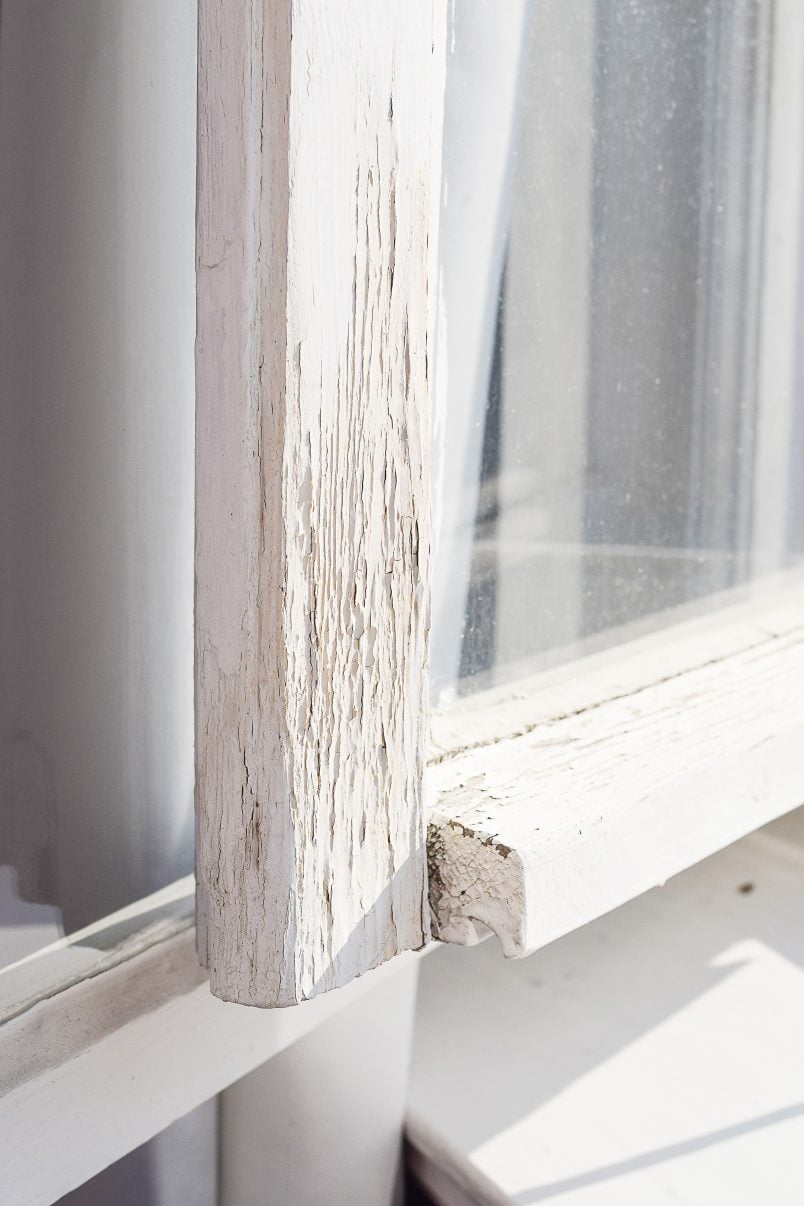
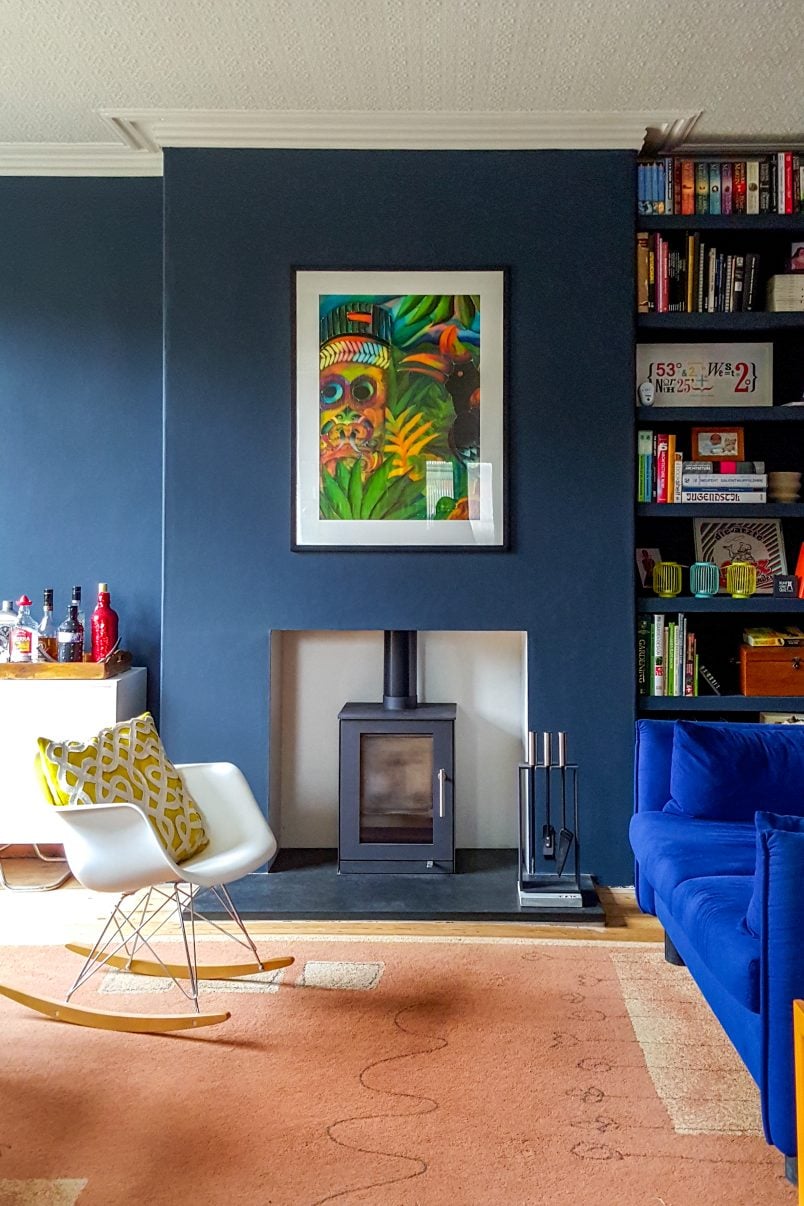

Arthurgrill says
This blog post was quite educational, therefore I took pleasure in reading it. The site has a lot of useful details regarding efficient house ideas, which I like. I found the author’s extensive use of visual aids to be quite helpful. Personally, I found the blog to be really useful.
Christine says
Thank you!
Cx
Eina says
This is the best energy audit guide I’ve read.
Thank you for cautioning about certain approaches, such as blown in wall insulation, and I’ve seen terrible damage done to older houses such as dry rot and mould.
What advice would you give for unused fireplaces? I once found 30 year old newspapers stuffed up up chimney to keep out draughts. Quite amusing to read.
Hope you are doing well, and taking a rest from time to time.
(Writing this whilst wearing layers of silk and merino at the end of March, just as people living in this old house did before us.)
Christine says
Thanks, Eina! You’re completely right – unused fireplaces can be a huge source of heat loss. To reduce the heat loss, you can install a chimney balloon which is a special inflatable pillow that blocks the opening and stops the heat from escaping. They are really safe, too as they just shrivel up if you accidentally light the fire. That’s just reminded me to put on on my shopping list :)
Cx
PS. I’m wearing normal socks, ski socks and fluffy slippers (and a woolly hat) in the house as it’s pretty cold here at the moment. Woke up to snow everywhere!